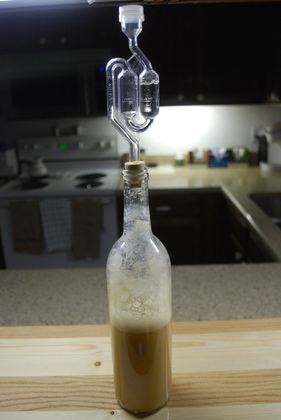
I thought I'd take some pics while we make up a batch of mead, to show how we do it. These are old pics, most making plain mead, we now make a melomel with apple juice instead of water. There have been numerous changes to our house, floors and kitchen range have been replaced.

| First we make up a batch of starter (the yeast), please take a look at our Mead Making Procedure for the recipe. Here is a starter (in a clear bottle) bubbling away. Starter is very much like a batch of must only you just make a small amount then let it ferment. When you make the must you pour this in when the procedure says "pitch the yeast". This gets you a larger volume of yeast cells to get started. |

| This one has been going about 24 hours, you can see where the solution bubbled up to alomst fill the bottle, and has now died down a little. |

| The bubble is just breaking to the top of the double bubble (air lock) we use vodka in our air lock. |
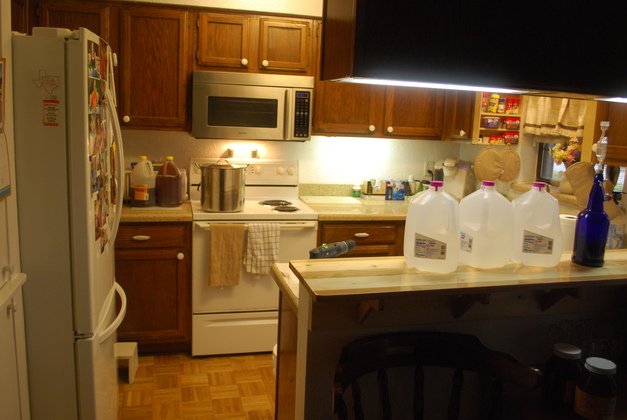
| The kitchen, you can see the stock pot boiling 1 gal. of water on the stove. 3 more gallons of water on the bar. |
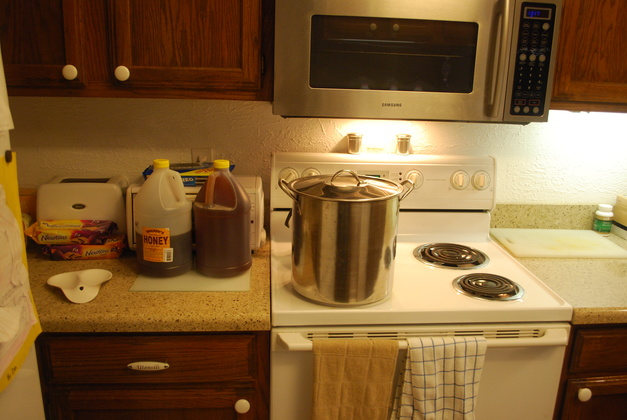
| Closer pic of the stock pot boiling, note the 1-1/2 gals of Walker Honey on the counter top. |
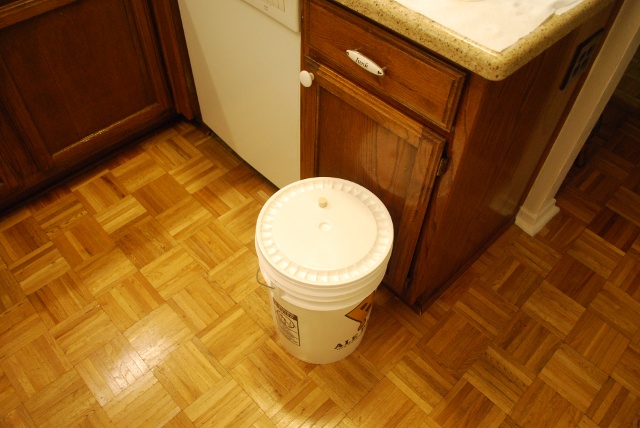
| Fermenter on the floor, sanitized and ready. |

| While the stock pot is boiling, honey ready to put in the sink with warm water. Note the sack of ice on the counter, for cooling the must after the honey is added. |
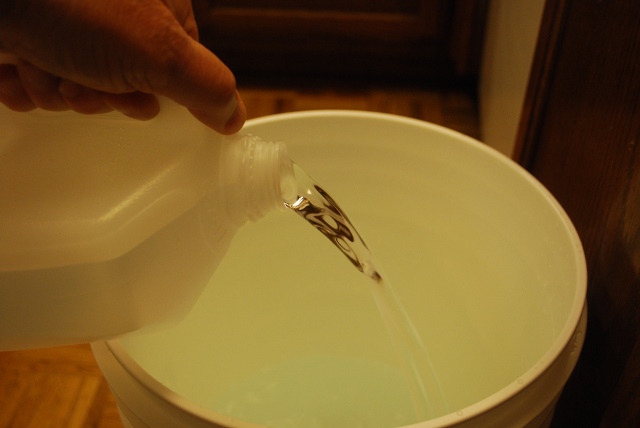
| Pouring the 3 gallons of distilled water into the fermenter. We now use 3 gallons of Sams 100% Apple Juice and the result is Cyser (Apple/Honey Mead, a Melomel). |
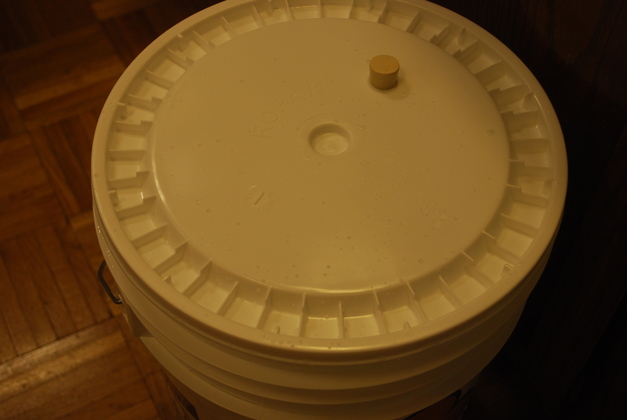
| Water in the fermenter closed up, waiting for the rest of the must. |

| Water is almost finished boiling, we use the timer on the microwave to remind us when it has boiled enough. |
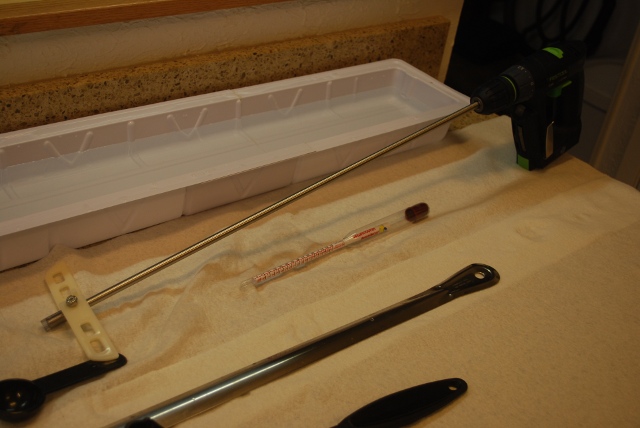
| Stirrer and hydrometer, sanitized and ready. |

| Its about 160° here, that just about right. |
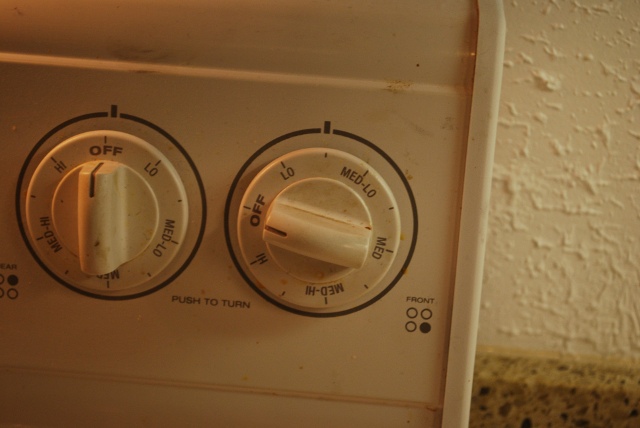
| Note the electric stove small burner is set low. |
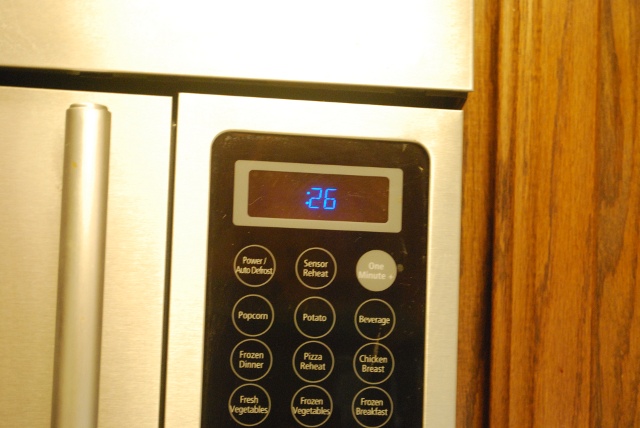
| Almost through pasturizing. |
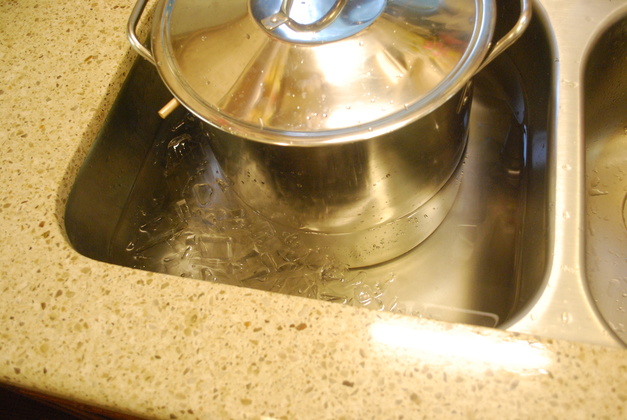
| The pasturizing is over, now we have to cool it before adding the yeast. Phase one of the cooling, using the ice from the store. |

| Cooling phase two, using the ice from our fridge. Note, when you try to reduce the must to about 75° using 70° water (thats not much differential), it helps to add ice. |
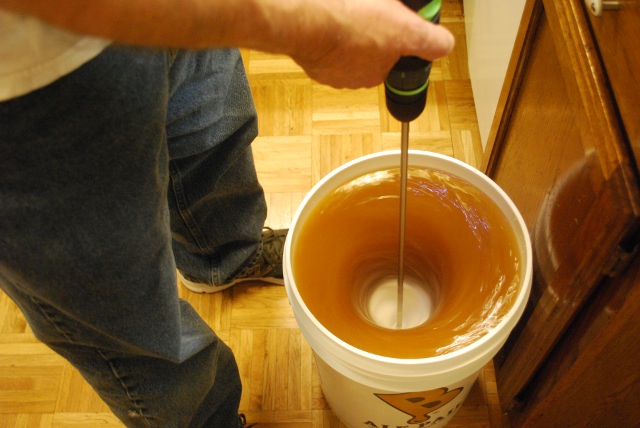
| The must has cooled, we poured it into the fermenter, poured the yeast starter into the fermenter and now I'm oxegenating the must. Note the foam around the stirrer, as it's blade cavitates. |
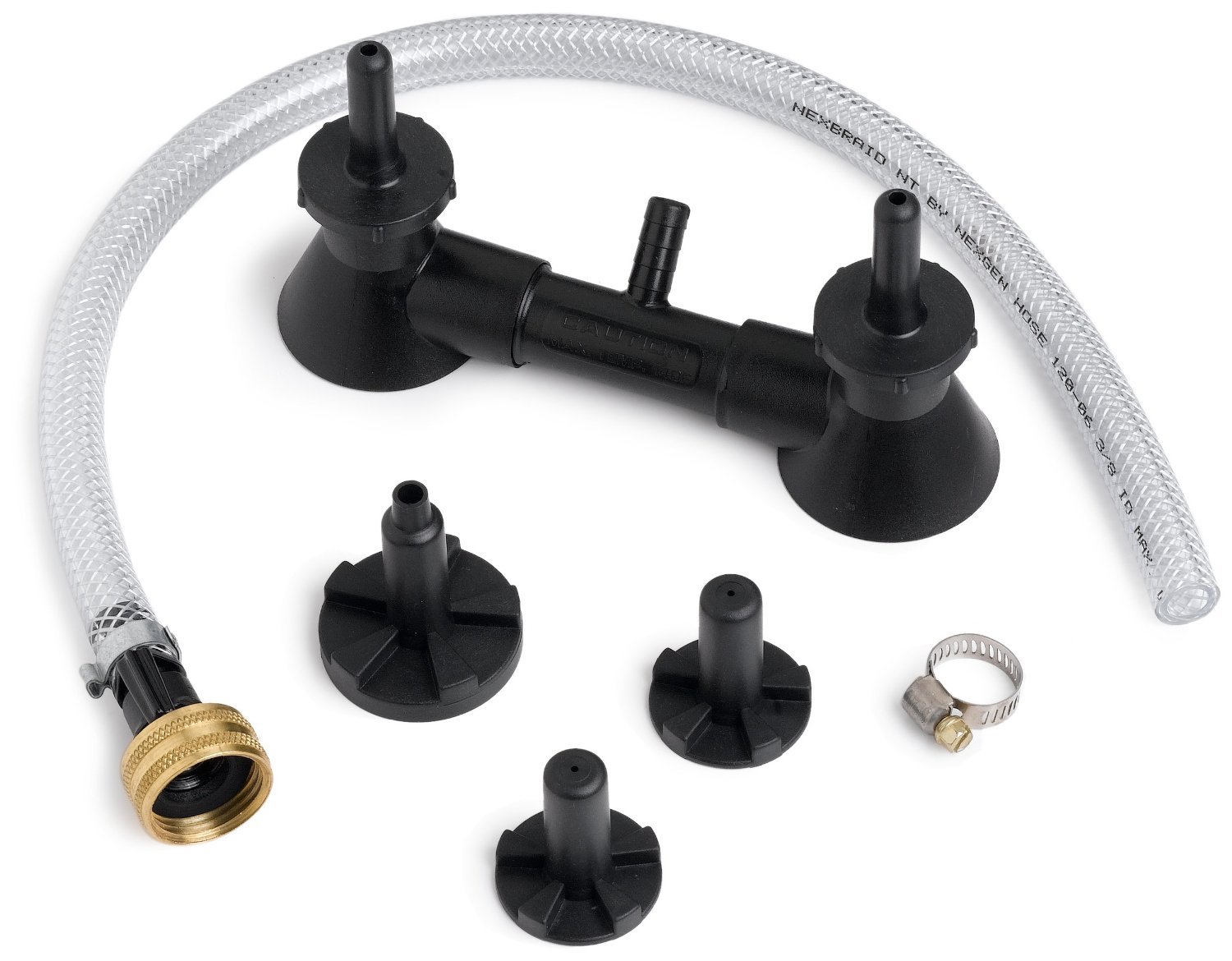
| Fermtech Double Blast Bottle Washer. This is what we rinse bottles with just before bottling mead. |